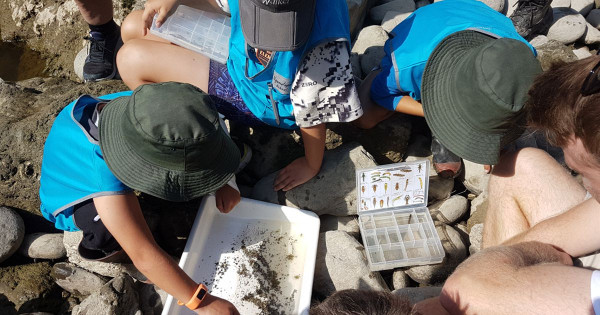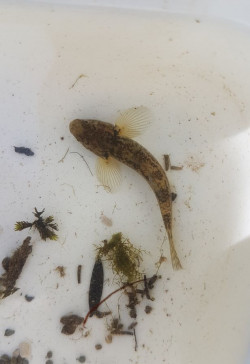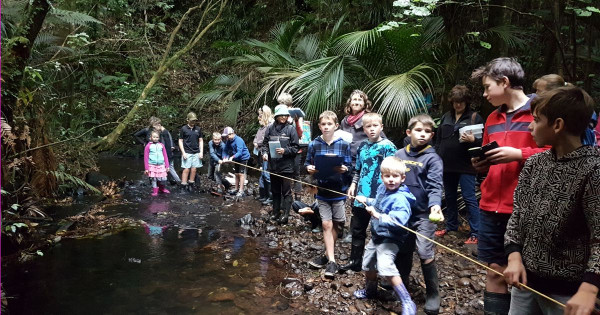Freshwater habitats are abundant in Taranaki, with more than 530 named awa/rivers and streams. We can help your ākonga/students learn how to monitor freshwater environments, including rivers, streams and wetlands.

Streams and rivers
How healthy is your local stream? Assessing stream health involves investigating the water quality, the physical features of the stream and the plants and animals living in and alongside the stream. We can get your ākonga/students actively involved with monitoring stream health by measuring and recording the following parameters::

- Macroinvertebrates (stream bugs)
- Water velocity
- Water temperature
- Water clarity
- pH
- Conductivity
- Stream bed composition
- Stream bank vegetation
We can guide the ākonga/students to interpret the results so they can assess stream health and, if relevant, determine what can be done to improve stream water quality.
This activity is suitable for primary, intermediate and secondary levels. More advanced analysis can be undertaken at secondary school level using the Stream Health Measurement Assessment Kit (SHMAK):
https://niwa.co.nz/freshwater/management-tools/water-quality-tools/stream-health-monitoring-and-assessment-kit(external link)
For a detailed record of aquatic macroinvertebrates found by schools in Taranaki check iNaturalist NZ: https://inaturalist.nz/projects/freshwater-invertebrates-nz(external link)

Wetlands
Wetlands provide important habitat for threatened species, remove pollutants from the water and act as a significant carbon sink. They are also under threat, with less than 10% of original wetland area remaining in Taranaki.
We can help support your ākonga/students learn more about wetlands through providing a presentation and getting them activity involved in monitoring and restoring a local wetland if appropriate.
We can help get you up and running with a monitoring and restoration project using the WETMAK resource developed by NZ Landcare Trust: https://www.landcare.org.nz/resource-item/wetmak(external link)
Options for monitoring and restoration, depend on the suitability of the wetland and level/ability of your ākonga/students and include:
- Setting up photopoints.
- Mapping wetland vegetation.
- Conducting a weed survey.
- Invasive predator monitoring and trapping (linking to Towards Predator-Free Taranaki).